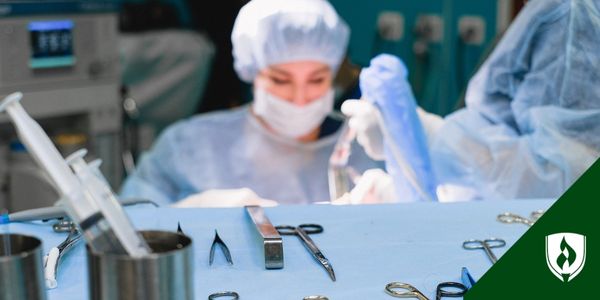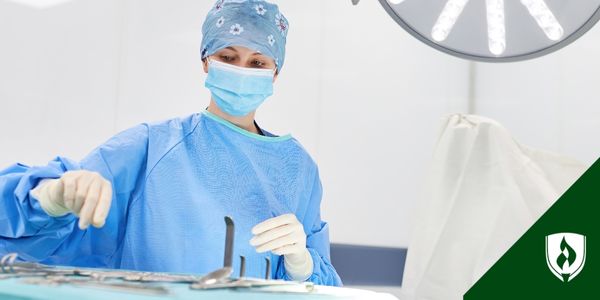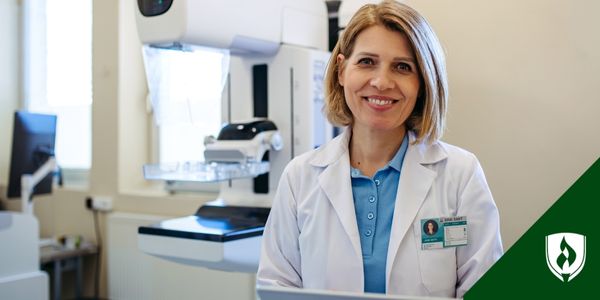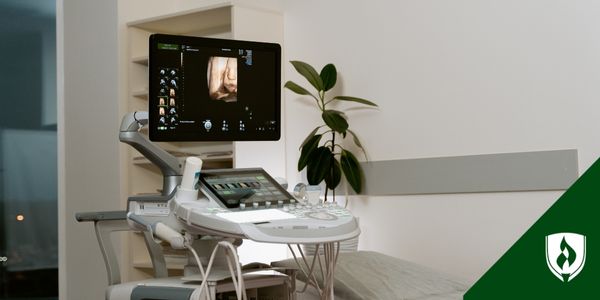How To Become a Medical Laboratory Technician: A Step-by-Step Guide
06/10/2025
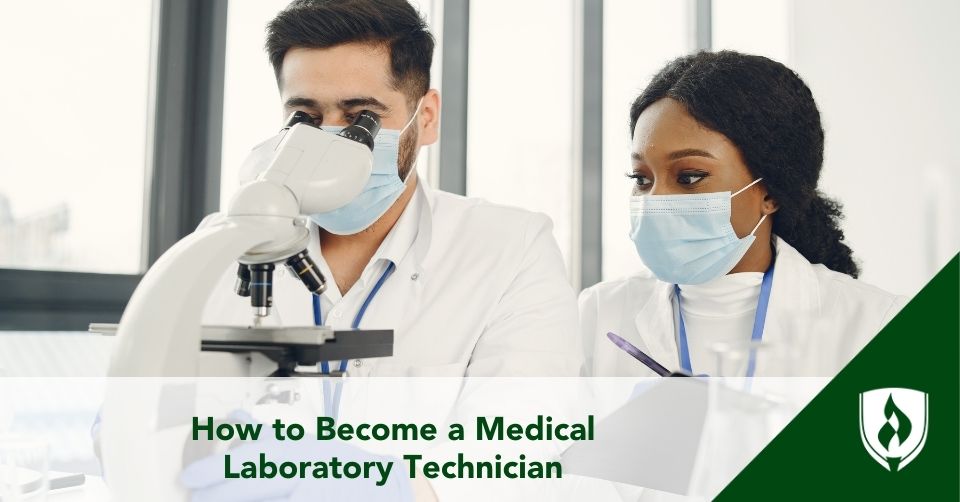
Are you someone who loves science, enjoys solving puzzles, and wants to make a real difference in healthcare without spending years in medical school? If so, a career as a Medical Laboratory Technician (MLT) might be something worth considering. MLTs are the behind-the-scenes heroes of healthcare who support diagnoses and treatment decisions made by healthcare providers.
Whether you're just starting to explore your options or ready to take the next step, we’re here to walk you through how to become a medical laboratory technician and how Rasmussen University can help you get there.
Step 1: Understand the Role of a Medical Laboratory Technician
Before diving in, it’s important to know what MLTs do and where they work. Medical laboratory technicians perform1 routine and complex laboratory tests to help physicians make accurate diagnoses. They work with automated equipment, follow strict safety protocols, and play a key role in the treatment of patients.
Typical responsibilities include:
- Collecting and preparing biological specimens like blood, urine, and tissues
- Using laboratory equipment to perform laboratory procedures
- Recording and analyzing test results
- Maintaining lab instruments and ensuring quality control
- Working with other laboratory personnel and healthcare professionals
MLTs are typically employed2 in hospitals, clinics, clinical laboratories, blood banks, research labs, and even the armed forces.
Step 2: Earn an Associate Degree from Rasmussen University
To qualify as an MLT, you need an associate degree3 in medical laboratory technology or applied science. Rasmussen University offers an Associate’s degree in Medical Laboratory Technician4 that can be completed in as few as 21 months. The program is designed to provide both academic courses and hands-on training.
At Rasmussen University, the MLT program includes:
- Clinical chemistry
- Microbiology
- Hematology
- Phlebotomy
- Transfusion medicine
The program is accredited by the National Accrediting Agency for Clinical Laboratory Sciences® (NAACLS®),5 ensuring it meets national standards and prepares students for certification and employment.
Step 3: Pass the ASCP Certification Exam
After the successful completion of your degree, you’ll be eligible to sit for a national certification exam. While not always legally required, certification may be a requirement for certain jobs.
Certification organizations include:
- American Society for Clinical Pathology® (ASCP®)6
- American Medical Technologists® (AMT®)7
- The American Registry of Radiologic Technologists® (ARRT®)8 for certain specialties
At Rasmussen University, the MLT program prepares graduates to take the ASCP® certification exam. The application fee for the first certification exam attempt is included as part of the program’s comprehensive offerings.
Benefits of becoming certified:
- Demonstrates your qualifications to employers
- May be helpful to figure out if you want to specialize in more positions
- May be required for licensure in certain states
- Boosts your confidence and credibility as a healthcare professional
Step 4: Look Into Licensure (if required)
Some states require MLTs to obtain a license. Licensing rules vary, so check your state’s regulations early in the process. To find your local requirements, check with your state’s department of health, board of occupational licensing or visit the American Society for Clinical Laboratory Science® (ASCLS®)9 website to learn more.
Step 5: Explore Job Opportunities in Medical Laboratory Technology
Once certified, you can explore the type of career you want to pursue. According to the Bureau of Labor Statistics, employment for medical laboratory technicians is projected10 to grow 5% from 2023 to 2033.
Job opportunities may be found in:
- Medical laboratory technician
Step 6: Keep Learning With Additional Education
Some MLTs may choose to pursue additional education or credentials, which could open pathways to roles such as medical laboratory scientists (MLS), supervisors, or laboratory managers. Advancing your career may look different for everyone. Some may choose to earn a bachelor’s degree in medical laboratory science, medical technology, or a related field.
Ways to keep learning:
- Specialize in microbiology, molecular diagnostics, or clinical chemistry
- Earning certifications in specific areas of laboratory testing
- Seek mentorship or mentor new laboratory technicians
- Pursue a master’s degree
Continuing education is often required to maintain certification and keep up with changes in laboratory science and healthcare technology.
Launch Your MLT Career With Rasmussen University
Now that you know how to become a medical lab technician and why the timing is right, what are you waiting for? Rasmussen University’s MLT program4 is designed to equip students with the skills, knowledge, and real-world experience to help you succeed. Accredited programs, supportive faculty, and opportunities for career growth equips students with foundational skills to pursue entry-level roles in the field.
1Bureau of Labor Statistics, U.S. Department of Labor, Occupational Outlook Handbook, Clinical Laboratory Technologists and Technicians, "What They Do," at https://www.bls.gov/ooh/healthcare/clinical-laboratory-technologists-and-technicians.htm#tab-2 (visited Apr. 30, 2025).
2Bureau of Labor Statistics, U.S. Department of Labor, Occupational Outlook Handbook, Clinical Laboratory Technologists and Technicians, "Work Environment," at https://www.bls.gov/ooh/healthcare/clinical-laboratory-technologists-and-technicians.htm#tab-3 (visited Apr. 30, 2025).
3Bureau of Labor Statistics, U.S. Department of Labor, Occupational Outlook Handbook, Clinical Laboratory Technologists and Technicians, "How to Become One," at https://www.bls.gov/ooh/healthcare/clinical-laboratory-technologists-and-technicians.htm#tab-4 (visited Apr. 30, 2025).
4Rasmussen University, "Medical Lab Technician Program," at https://www.rasmussen.edu/degrees/health-sciences/medical-lab-technician/ (visited Apr. 30, 2025).
5National Accrediting Agency for Clinical Laboratory Sciences® (NAACLS®), at https://www.naacls.org/ (visited Apr. 30, 2025).
6American Society for Clinical Pathology® (ASCP®), at https://www.ascp.org/ (visited Apr. 30, 2025).
7American Medical Technologists® (AMT®), at https://americanmedtech.org/ (visited Apr. 30, 2025).
8American Registry of Radiologic Technologists® (ARRT®), at https://www.arrt.org/ (visited Apr. 30, 2025).
9American Society for Clinical Laboratory Science® (ASCLS®), at https://ascls.org/ (visited Apr. 30, 2025).
10 Bureau of Labor Statistics, U.S. Department of Labor, Occupational Outlook Handbook, Clinical Laboratory Technologists and Technicians, "Job Outlook," at https://www.bls.gov/ooh/healthcare/clinical-laboratory-technologists-and-technicians.htm#tab-6 (visited Apr. 30, 2025).
